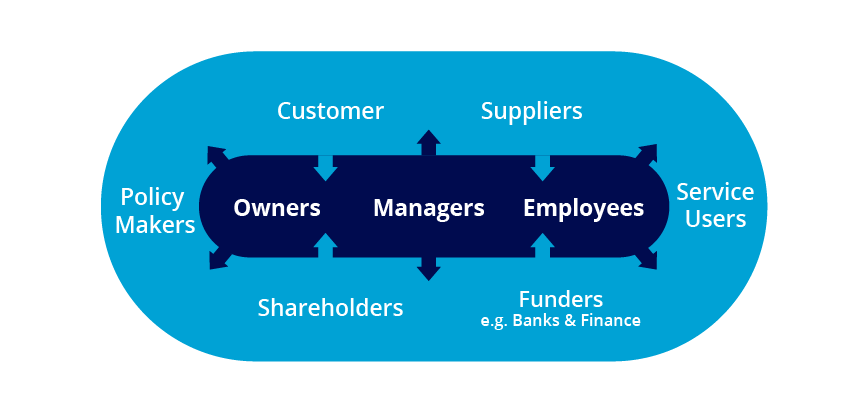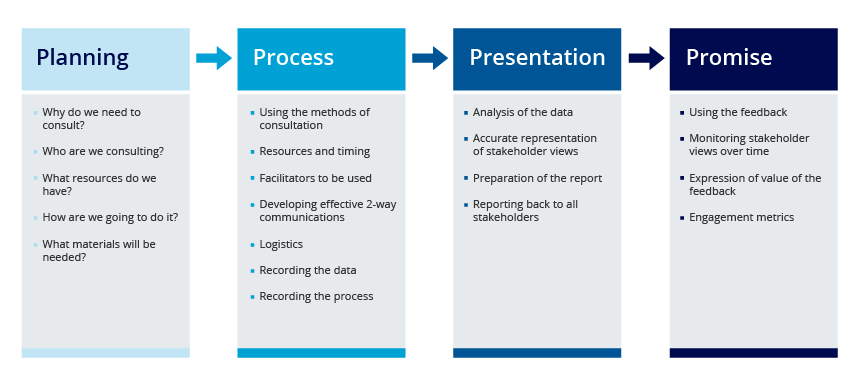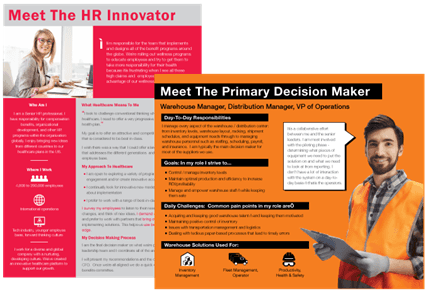Never before has there been such an emphasis placed on understanding the beliefs, attitudes and behaviors of stakeholders for any business or company. Word-of-mouth feedback from those who interface with a company or business used to be considered interesting but not of strategic importance. However, the past decade has seen a shift in recognition of the importance of seeking feedback and understanding the views of those who support a business or company, or who have a vested interest in it.
Public services, in particular, have embraced the approach, seeking involvement of the public in the development and shaping of future services to particular communities; an acknowledgement of the need to involve service users in service development, review and policy making. Thus, consultation has become a requirement in the successful development of public policy and service. However, its use is not confined to the public and “not for profit” sector.
Private business similarly recognizes the need to be in tune with the perceptions and attitudes of those who will shape and influence its success (or failure!). A company’s reputation is critical to its success, and as reputation is all about the way a company operates, the way people see it operating and the future directions it plans and takes, understanding those who influence the future success of the business is critical. This can involve employees, customers, suppliers, funders, partners, policy makers, etc., and can relate to anything from the development of new products and services to the strategic positioning of the company over the next 10 years.
What Is A Stakeholder?
A stakeholder is anyone who can affect or is affected by the actions of a corporation. The concept of the stakeholder was first used in 1963, at the Stanford Research Institute. It defined stakeholders as:
“those groups without whose support the organization would cease to exist.”[1]
It was further developed in the 1980s by R. Edward Freeman and has subsequently been widely accepted in the business community. Broadly speaking, the stakeholder is actually anyone who has an interest in the matter to hand, and the net can be cast as widely, or as tightly, as the business wishes.
Post, Preston and Sachs (2002) link the interrelationship between a business and its stakeholders, particularly in relation to risk and reward…
“The stakeholders in a corporation are the individuals and constituencies that contribute, either voluntarily or involuntarily, to its wealth-creating capacity and activities, and that are therefore its potential beneficiaries and/or risk bearers.”
This can also be applied to public service as well as the commercial environment; wealth relating to growth and development and risk being in failure of the venture.
The term “stakeholder” has been widely adopted, not least in the public sector. In 2008, BBC News carried a story reporting that Local Councils had been warned about the unnecessary use of jargon in literature and communications with the public. A list of 100 words which should be avoided in all publications was issued. “Stakeholder” (definition: business or occasionally person with a stake on the success of something) was on the list.[2]
Who Are The Stakeholders?
Stakeholders are generally divided into two groups; internal and external stakeholders. As the terms suggest, internal stakeholders come from within the corporation and external stakeholders are those outside the corporation but with a vested interest in it.
Internal stakeholders usually comprise employees, managers and owners, but in some businesses can involve volunteers, students, etc. Recognition of the importance of consultation with internal stakeholders i.e. employees, was formally given in the passing of the Information and Consultation of Employees Regulations (2004), which sets out clearly the requirement for corporations to consult with their employees; this being extended to corporations with more than 50 employees in 2008.

External stakeholders are those outside the corporation who interact with it in some way. Most commonly this includes funders or investors e.g. shareholders, banks and finance companies. Suppliers and customers are also significant external stakeholders. However, regulators, policy makers and legislators are also in this group. Some corporations also consider significant influential opinion leaders to be among their key external stakeholders as influencers of attitudes and beliefs. Each of these groups of stakeholders is usually termed “constituencies“, and a constituency represents a homogeneous group usually holding a similar interest in the business’s affairs. The diagram below shows common internal (dark blue) and external (light blue) stakeholders.
Figure 1 – Common Internal and External Stakeholders

What Is Stakeholder Consultation?
Stakeholder consultation involves the development of constructive, productive relationships over the long term. It results in a relationship of mutual benefit; it enables us to identify trends and emerging challenges which are currently or will in the future impact on the business. Listening to stakeholder concerns and feedback is a valuable source of information that can be used to improve project design and outcomes, and help a corporation to identify and control external risks. It can also form the basis for future collaboration and partnerships.
Consultation enables us to identify and monitor trends, challenges and perceptions over time with specific groups of stakeholders. It therefore helps us to:
- Identify and track needs and expectations
- Identify and track perceptions and attitudes
- Provide feedback on specific planned developments
- Evaluate implementations and actions
- Establish the brand values and positioning of the corporation as seen by others
The internal and external stakeholder contribution can be vital to the effective allocation of resources, the success of individual developments, and the longer-term success and direction of the corporation.
Consultation usually takes on two forms:
- Consultation on specific developments, projects, ventures
- Ongoing consultation to track and monitor stakeholder perceptions within the broader operating environment
Specific project-based consultation is widely used for both commercial and social projects. In the public sector, it is often termed “public engagement” or “public consultation”, and is usually related to local service developments within specific communities, and policy development at all levels.
In the commercial sphere, it is commonly used for development of new products and services. A company may consult with its customers to establish future needs and ensure these are incorporated into the development of new products and services. Customers are also likely to present relative perceptions i.e. in the competitive market providing valuable input about competitor activity. In addition, this can be followed up by feedback on prototypes, blueprints, etc. before the final products are presented to market.
Customer Consultation In Action: How Envirotainer Used Customer Feedback To Develop A New Solution
Envirotainer are the global market leader in secure cold chain solutions for air transport of pharmaceuticals. They place a heavy emphasis on understanding and better meeting customer needs and so approached B2B International to help gather customer feedback for a new solution.
Envirotainer wanted to understand which features of a new container would be most important to customers and how this would affect their willingness to pay. They also wanted to understand which features to prioritize in their go-to-market promotional strategy.
The research involved consultation with customers across methods such as in-depth interviews and large-scale quantitative surveys and allowed Envirotainer to build a deep understanding of what their customers really wanted. To learn more about how this process of customer consultation helped to successfully launch the new container solution, read the full case study.
Ongoing consultation is adopted to ensure buy-in from stakeholders and to ensure the corporation is not moving away from the expectations and needs of those who have an interest in its affairs. It is often related to company or brand positioning, competitive positioning, company mission or direction. It can be a metric in the evaluation of the trajectory towards a particular goal, or the anticipation of reactions towards a change in a corporation’s direction or branding. As such, it is used widely in both the public and private sector. Political affiliations use it as a barometer of support. In all cases, it is a way of mitigating risk, especially if the corporation is dependent upon its stakeholders to provide funding. For example, a University with significant funding from its Alumni may engage in a regular program of tracking stakeholder perceptions to ensure it does not jeopardize its position, and to anticipate communications required about any change in policy or position. This type of stakeholder consultation can also have a good PR spin-off as it affords the opportunity to present new positions or remind of existing positions.
Benefits Of Consultation
Whatever the reason for conducting stakeholder research, there are some clear benefits for the organization:
- Firstly, decision making will be more informed and in tune with those who the actions will affect.
- Secondly, there will be greater satisfaction from stakeholders with the outcome. Through the engagement process, those who decisions will affect will feel they have inputted into the final outcome and that everyone’s views have been taken into account. Depending on the method of consultation, they will also understand that their perspective may not be shared by all and that there is a need for compromise.
- This in turn will lead to a greater chance of a successful implementation of the initiative. Stakeholders will feel ownership of the venture, and are therefore more likely to want the venture to succeed.
- Finally, consulting with people who will be affected by a development is an example of best practice. It represents good governance and transparency, demonstrates a desire to engage in meaningful two-way communication, and recognizes the important contribution stakeholders at all levels can make to future changes which will directly or indirectly affect them.
The Consultation Process
A corporation’s consultation process is an opportunity for stakeholders to get information as well as give feedback. Stakeholders can use the opportunity to educate the corporation about the local context in which a project will take place, to raise issues and concerns, ask questions, and potentially help shape the project by making suggestions for the corporation to consider and respond to. Therefore, a planned process for consultation needs to be in place, commencing with clear objectives about what is to be achieved.
The process generally involves five steps to successful execution. It can be ongoing and iterative, a one-off consultation related to a specific discrete issue, or a series of consultations related to a particular project. Either way, the process will generally involve four steps (the 4 Ps), as shown in Figure 2.
Figure 2 – The Consultation Process

In the “planning” stage, the aims and objectives need to be clarified, along with identification of the usefulness of the process, i.e. the likelihood that stakeholder views will be incorporated into strategic planning. The availability of resources to carry out the process will need to be established and a method of consultation designed that is reflective of this. Consideration will need to be given as to whether any pre-release information is required e.g. about a project design, brief, plans, strategic positions, etc.
After establishing the aims and objectives, the actual process of consultation will need to be planned, i.e.:
- Who are the key stakeholder groups?
- How accessible are they?
- Are there any hard-to-reach groups?
- How can their co-operation and engagement be gained?
- What is the best method of consulting with the groups?
- What do they need to see beforehand?
- How can this be disseminated?
- Will any pre-consultation be required to prepare stakeholders for the exercise?
The method of consultation will need to be identified, balancing the resources available and the level of feedback required.
The “process” stage is the “doing” stage; this involves carrying out the consultation. Good planning will ensure this stage runs smoothly. Considerations in this stage mainly centre on developing effective relationships with stakeholders and facilitating open and honest sharing of views, and accurate recording of the process and the data.
The next stage, “presentation“, is concerned with the analysis and the reporting of the data. The data will need to be analysed and reporting prepared for the relevant audiences i.e. back to the corporation, to policy makers, etc. but also feedback to those who have engaged in the process and taken part. The form of reporting will need to take into account audiences and ensure the highest possibility of actions as a result of the consultation.
The final stage relates to actions as a result of the consultation; the “promise“. Part of the process of engaging with stakeholders is the investment in a longer-term relationship of mutual benefit and trust. Without demonstrable use of stakeholder feedback in resultant action, this can be damaged. The final stage, therefore, has an element of PR contained within it; communications about resultant actions need to be carefully considered to reach stakeholder audiences.
Methods Of Stakeholder Consultation
Consultation with stakeholders involves using methods commonly employed by market and academic researchers. Key issues of consideration when deciding on the methods are whether the consultation requires depth or breadth of knowledge (or a combination of the two).
The former calls for largely qualitative research approaches. These are approaches which use open styles of discussion and debate. It is the facilitator’s job to tease out views and perceptions which are truly held by the stakeholder. The focus group, individual depth interviews, and observation are the most common methods used.
If breadth is required, approaches reaching larger numbers of people and using more standardized measurement tools are required i.e. quantitative methods such as surveys, short street interviews, e-surveys, etc. These methods will reach wider audiences but are restricted to largely closed questions and rating scales. The data is numerical and statistical analysis is used to demonstrate the generalist viewpoint. Some methods straddle these two poles and have the ability to gain both depth and breadth, such as the large public meeting and online open debate consultation tools now available to us through the digital media.
Figure 3 – Approaches to Consultation

Each of these methods has its strengths and its weaknesses. The method – or combination of methods – selected should be reflective of the aims of the consultation process. The chart below demonstrates where the strengths of the common approaches lie.
Figure 4 – Strengths of Commonly Used Methods of Stakeholder Consultation
| Attribute | Surveys | Focus groups and individual meetings | Public meetings |
|---|---|---|---|
| Quality/depth of feedback | ✓ | ||
| Speed of execution | ✓ | ||
| Level of engagement with stakeholder | ✓ | ||
| Relationship building | ✓ | ✓ | |
| Opportunity for idea sharing, consensus building | ✓ | ✓ | |
| Ability to show something e.g. plans, branding, etc. | ✓ | ✓ | |
| Measurement of attitudes | ✓ | ✓ | |
| Cost | ✓ | ✓ |
The Longer-Term View
Stakeholder research has become increasingly popular, as both the public and the private sector apply principles of good governance to the way they operate. There is recognition that in order to improve an business or a company’s success, it needs to look both inward and outward at those who are affected by the decisions it takes and the products it develops.
Many projects involve revisiting stakeholders after a period of time, using the relationship to maximum value to evaluate reactions to actions and to track perceptions. Corporations following this pattern are more likely to operate in harmony with those who are affected by their actions or who have a vested interest in their success.
Stakeholder consultation is therefore important insurance for the long-term effectiveness of a business, enabling it to build sustainable new directions and carry its audiences with it. It generally makes for a more informed, reflexive business, responsive to the needs of its users and in tune with prevailing perceptions. Returning to Post, Preston and Sachs’ (2002) link between stakeholder support and the sharing of both risk and reward, we can ask which corporations cannot afford to engage with it?
[2] BBC News Magazine 8.2.08


